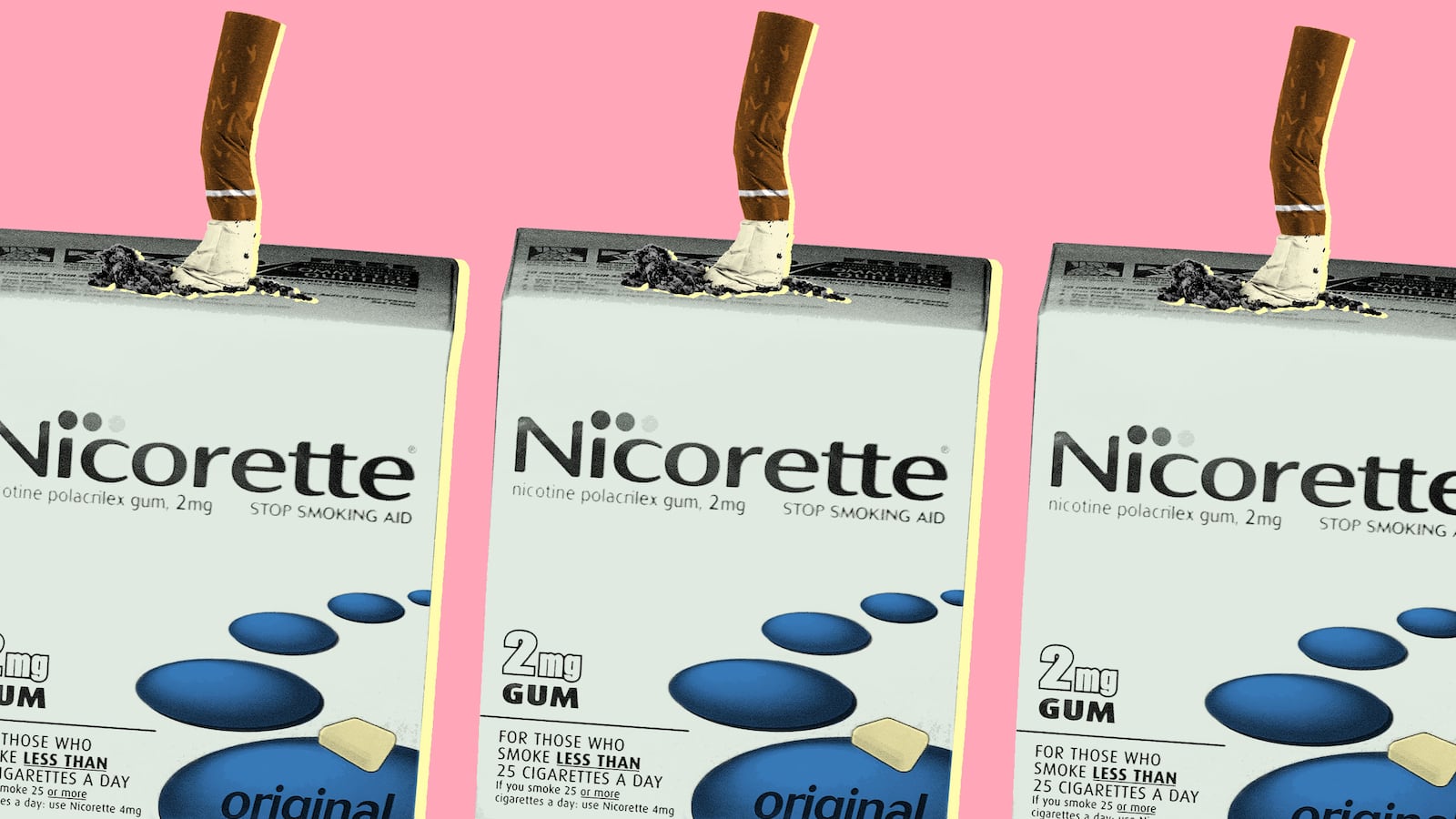On Thursday, Food and Drug Administration Commissioner Scott Gottlieb announced a drastic new step in the fight to curb cigarette smoking in the U.S.: lowering the amount of nicotine in cigarettes to “[minimal] or non-addictive levels”:
<p>With that in mind, we’re taking a pivotal step today that could ultimately bring us closer to our vision of a world where combustible cigarettes would no longer create or sustain addiction—making it harder for future generations to become addicted in the first place and allowing more currently addicted smokers to quit or switch to potentially less harmful products. </p>
We’ve long known that what makes cigarettes so addictive is nicotine. But we’ve also had nicotine replacement products for decades: nicotine gum, patches, and more recently, e-cigarettes.
Thursday’s statement was the latest in Gottlieb’s initiative against tobacco, who introduced a comprehensive plan last July focused on tackling smoking. It’s one of a series of government-backed initiatives to curb tobacco use, dating back to the mid-’60s. In 1964, the U.S. surgeon general released a report that linked tobacco use to an increased risk of lung cancer and a 70 percent increase in mortality over nonsmokers. Since then, tobacco smoking rates have dropped from 42.5 percent to only 15 percent today. And although premature death from cancer has been one factor in the decline of smokers, experts also attribute the decline to Nicotine Replacement Therapies, or NRTs, like Nicorette.
NRTs help users quit by providing the addictive substance of cigarettes— nicotine—without the toxic effects of a tobacco containing cigarette. First licensed in the 1980s, NRTs quickly became mainstream when Nicorette—a nicotine-containing chewing gum—exploded onto the U.S. market in 1996.
“There’s no magic bullet as far as quitting smoking, but I think the contribution of NRTs has been an important one,” Dr. Michael Fiore, director of the Center for Tobacco Research and Intervention at the University of Wisconsin School of Medicine and Public Health, told The Daily Beast.
While there is no research as to how many people have been able to quit smoking due to Nicorette on the population level, research shows that using NRTs in conjunction with behavioral support can double or triple an individual’s chances of quitting. “Smoking is a very complex physical and social dependency, but nicotine replacement therapy has allowed people who want to quit to be able to do so,” Fiore said.
One of the most frequently asked questions about NRTs such as Nicorette is whether they’re safe. After all, consumers are trying to quit so they aren’t addicted to nicotine, yet Nicorette contains nicotine; the company’s website says using Nicorette to break a smoking addiction is helpful because the product contains “a low dose of therapeutic nicotine that’s gradually absorbed by your body to help reduce nicotine withdrawal symptoms.”
Fiore said that in general, NRTs like Nicorette are safe. “We already know that people tolerate nicotine because they’re getting it from cigarettes. They’re not having some new adverse reaction. Virtually all evidence on nicotine is that when used as directed, medicinally, it’s safe.”
However, Fiore warned, nicotine remains a powerful drug, with the potential for accelerated heartbeat and higher blood pressure in very large quantities. A representative from Nicorette’s manufacturer, GlaxoSmithKline, told The Daily Beast over email that the gum should be used only as a temporary aid, for a maximum of 12 weeks. Users who chew Nicorette gum for longer than that run the risk of getting addicted, and might experience withdrawal symptoms like irritability and headaches when attempting to wean off.
But gum isn’t the only option available on the market, and some doctors are pushing a controversial new NRT that’s been shown to curb smoking rates in a big way: electronic cigarettes.
“When Chantix came out in 2008, the smoking rate on the population level didn’t change,” Dr. Shu-Hong Zhu, professor of family medicine and public health at the University of California San Diego School of Medicine, told The Daily Beast. “In 2009, we [the U.S.] had a huge federal tax increase in cigarettes, and we expected an increase in smoking cessation—but there wasn’t one.”
In fact, in 2014, the smoking cessation rate jumped for the first time in over a decade, from 4.5 percent up to 5.6, coinciding with increasing e-cigarette usage rates.
According to Zhu, it’s the flavor in e-cigarettes that makes all the difference. “An e-cigarette is vapor with nicotine and some flavor,” Zhu said. “The flavor may help adults use it more often, and it’s important to be consistent if you’re going to replace nicotine.” And unlike a patch, pill, or gum, e-cigarettes are also recreational.
E-cigarettes aren’t without risk, however. In the early 2000s, the same chemical flavoring that makes e-cigarettes so appealing—called diacetyl—came under fire when inhaling it was shown to cause lung disease.
Despite the risks, Zhu still held that it’s safer than tobacco cigarettes and a fair alternative if someone wants to quit.
“When you burn tobacco leaves, you generate tar and you’re breathing in carbon monoxide, which robs your blood of oxygen and can lead to a heart attack,” Zhu said. “That’s what’s going to kill you—and those two things aren’t present in e-cigarettes.” It’s worth noting, however, that e-cigarettes contain nicotine, which creates the addiction element of smoking in the first place.
Whether the new directive from the FDA will change how we think about NRTs and e-cigarettes remains to be seen. Gottlieb’s statement didn’t outline a direct plan, and experts will probably be referred to figure out what it means for a product to have a “minimal” or “non-addictive” nicotine level. Experts might be trying to make cigarettes passe, but the industry for their replacements, whether it be for quitters or people looking to enjoy smoking without harmful tobacco aftereffects, looks to be thriving.





